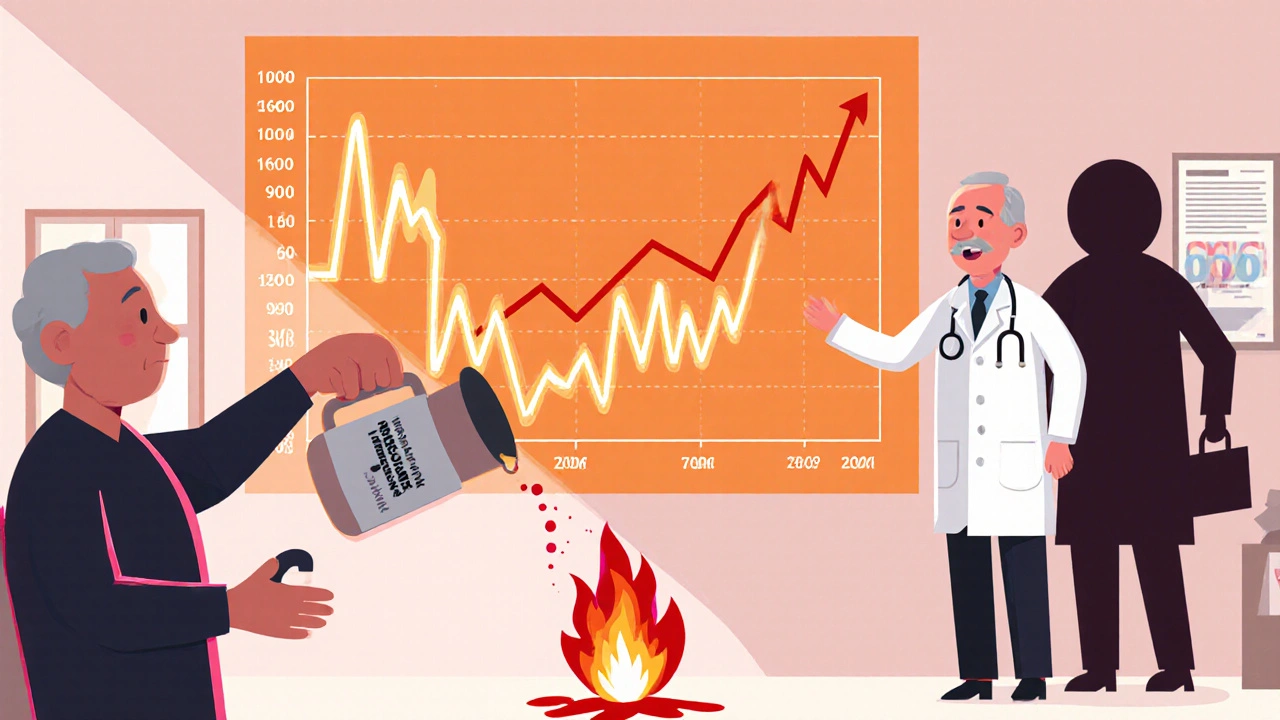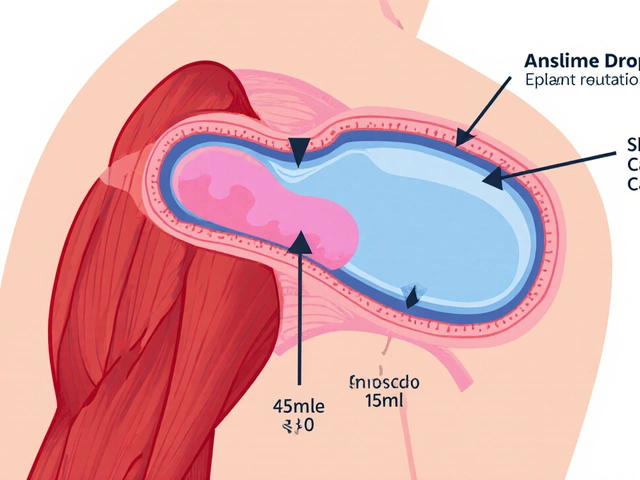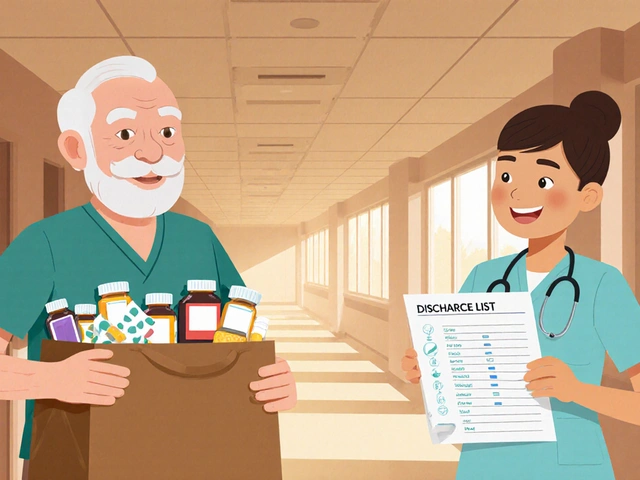
Warfarin Antibiotic Risk Calculator
INR Risk Assessment
This tool estimates potential INR increase when taking trimethoprim-sulfamethoxazole (Bactrim) while on warfarin. Based on clinical studies, Bactrim typically increases INR by 1.8 points within 36-72 hours.
Estimated INR After Bactrim
Recommended Action: Monitor INR closely as directed by your doctor
Why this matters: Bactrim increases INR by 1.8 points on average. INR >4.0 doubles bleeding risk, and INR >5.0 significantly increases risk of life-threatening bleeding.
INR levels can rise within 36 hours of starting Bactrim. Check your INR before starting and again within 48 hours.
When you're on warfarin, even a simple infection can become dangerous - not because of the illness itself, but because of the antibiotic you're prescribed to treat it. Trimethoprim-sulfamethoxazole, sold under brand names like Bactrim or Septra, is one of the most commonly prescribed antibiotics in the U.S. But if you're taking warfarin, this combo can push your INR into the danger zone - fast.
Why This Interaction Is So Dangerous
Warfarin works by blocking vitamin K, which your body needs to make clotting factors. Too little, and you bleed. Too much, and you clot. The goal is to keep your INR between 2.0 and 3.0 for most conditions like atrial fibrillation or deep vein thrombosis. But when you add trimethoprim-sulfamethoxazole, that balance shatters. Studies show this antibiotic combination raises INR by an average of 1.8 points - sometimes more. That’s not a small bump. An INR over 4.0 doubles your risk of bleeding. At 5.0 or higher, the risk spikes dramatically. One study found 42% of patients with this interaction ended up hospitalized. Nearly 4% died from internal bleeding. It’s not just one mechanism at play. Trimethoprim blocks CYP2C9, the liver enzyme that breaks down the more powerful S-warfarin molecule. That means warfarin sticks around longer, building up in your blood. Sulfamethoxazole pushes warfarin off protein binding sites in your blood, freeing up even more active drug. And on top of that, it kills off good bacteria in your gut that make vitamin K - the very thing warfarin is trying to block.How Fast Does It Happen?
This isn’t a slow burn. INR levels can start climbing within 36 hours of your first dose of Bactrim. By 72 hours, most patients who are going to have a big spike will already be in trouble. That’s why checking your INR right after starting the antibiotic isn’t enough - you need to check it before you start, and then again within 48 hours. One nurse practitioner reported seeing INR jump from 2.5 to 6.0 in elderly patients within just three days of starting Bactrim for a urinary tract infection. Another case involved a 78-year-old with a mechanical heart valve whose INR hit 8.2 - a level that can cause spontaneous bleeding in the brain or gut. He needed vitamin K and fresh frozen plasma to survive.Not All Antibiotics Are Created Equal
This isn’t true for every antibiotic. Amoxicillin? Almost no effect on INR. Ciprofloxacin? Moderate rise - about 0.9 points. But trimethoprim-sulfamethoxazole? It’s in a league of its own. A 2023 analysis of over 70,000 warfarin patients found TMP-SMX caused the largest INR spikes among commonly used antibiotics. Even more concerning: men were 9% more likely than women to have dangerous increases. Why? Not fully understood, but it may relate to differences in liver enzyme activity or body composition. Older adults, people with heart failure, poor nutrition, or liver disease are at highest risk. Their bodies handle warfarin differently to begin with. Adding TMP-SMX is like pouring gasoline on a small fire.
What Doctors Should Do
The American Heart Association and the Institute for Safe Medication Practices both classify this as a high-alert interaction. That means it’s on the shortlist of drug combos that can kill if not managed properly. If you absolutely must use TMP-SMX - say, for a severe infection with no alternatives - here’s what works:- Check INR before starting the antibiotic
- Reduce the warfarin dose by 20-30% upfront, especially if you’re over 75 or have other risk factors
- Check INR again at 48 hours, then every 3-4 days while on the antibiotic
- Have vitamin K on hand - oral 1-2.5 mg for INR 4-5 without bleeding, IV 5-10 mg for INR over 10 or active bleeding
- Consider switching to a different antibiotic if possible




Allison Turner
November 27, 2025 AT 18:02This is why I hate when doctors just prescribe Bactrim like it's candy. My grandma nearly bled out last year because they didn't check her INR. She was fine one day, and the next, she was in the ER with blood in her urine. No one warned us. No one even asked if she was on warfarin. It's not rocket science.
Why do we keep letting this happen? People die over this. Every. Single. Time.
Gayle Jenkins
November 29, 2025 AT 15:29YES. This needs to be screamed from the rooftops. I'm a nurse and I've seen this exact scenario play out three times in the last year alone. One patient, 82, INR jumped from 2.7 to 7.1 in 72 hours after starting Bactrim for a UTI. He didn't even know he was on warfarin-he thought it was just 'the heart pill.' We gave him vitamin K, fresh frozen plasma, and he spent a week in the hospital. All because no one thought to check.
Stop assuming. Start asking. And if you're on warfarin? Keep a printed list of dangerous meds in your wallet. I give them to every patient. It saves lives.
Darrel Smith
December 1, 2025 AT 08:48They don't want you to know this. They don't want you to know that your doctor is just clicking 'Bactrim' because it's fast and cheap and the computer auto-fills it. The pharmaceutical companies? They don't care. The hospitals? They don't care. The FDA? They've known for years. But they let it keep happening because changing the system costs money. And people? People are just numbers in their spreadsheets. Your life? Worth less than a prescription refill. You think this is an accident? It's not. It's negligence dressed up as 'standard care.' And if you're still taking warfarin without knowing this? You're being played.
Iives Perl
December 2, 2025 AT 02:08They're testing this on us. The INR spikes? Not an accident. It's a control mechanism. Bactrim's been used since the 50s. Why now? Why so many cases? They want us dependent. They want us scared. Watch the numbers-every time they push DOACs, the INR deaths go up. Coincidence? I think not. Check your meds. Check your blood. Don't trust the system. Ever. 🕵️♂️
Asha Jijen
December 2, 2025 AT 09:38So Bactrim is bad with warfarin? Big deal. In India we just take whatever the doctor gives and don't overthink. My uncle took it for 2 weeks and he's fine. Maybe Americans make everything a crisis? We have real problems here like dengue and cholera. Why waste energy on this? 😅
Also why is everyone so scared of bleeding? It's just blood. You live, you bleed. Chill.
reshmi mahi
December 2, 2025 AT 11:07OMG I just read this and my jaw dropped 😱 My cousin’s husband died last year from a ‘simple UTI’ and Bactrim… they never checked his INR… now I’m screaming at my doctor every time he prescribes anything. Why is this still happening?? Like… is anyone even reading the guidelines?? 🤦♀️🇺🇸
laura lauraa
December 3, 2025 AT 17:27It is, indeed, a profound and lamentable failure of the medical-industrial complex-a systemic erosion of clinical diligence, masked by algorithmic convenience and pharmaceutical inertia. One must ask: when did the Hippocratic Oath become an outdated footnote in the EHR? The human body is not a database; it is a symphony of biochemistry, and to treat it as such is not merely negligent-it is ontologically arrogant. I weep for the patients who are reduced to data points, their INRs trending like stock charts, their lives bartered for the sake of efficiency. This is not medicine. This is commodified neglect.
sharicka holloway
December 5, 2025 AT 08:54Thank you for writing this. I’ve been on warfarin for 12 years and I always ask about antibiotics now. I even have a note in my phone that says: ‘ASK ABOUT BACTRIM.’ I gave it to my mom and my brother. It’s not complicated. Just ask. It’s that simple. And if your doctor rolls their eyes? Find a new one. Your life matters more than their convenience.